There are many various alternatives to select when it comes to heating the house. Gas and electric fireplaces are two of the most popular fireplace options. We’ll look at how they compare and contrast.
The Differences Between Gas & Electric Fireplaces
Gas and electric fireplaces are the two most common types. Here’s a quick rundown of the differences:
- G.fireplaces use natural gas or propane to create flames; el.fireplaces use electricity to heat up coils.
- G.fireplaces are more expensive to install, but they’re also more energy efficient.
- El.fireplaces are easier to install and don’t require any special ventilation, but they’re not as efficient as gas models.
If you’re looking for an easy-to-install and efficient fireplace, then an electric model might be the best choice. But if you’re willing to spend more money upfront for a more efficient fireplace, then a gas model would be a better choice.
What Is A Gas Fireplace?
A gas fireplace burns natural gas or propane to produce heat.
There are two types of g. fireplaces: direct vent and B-vent. Direct vent ones have a sealed combustion chamber that vents directly to the outside through a pipe. B-vent fireplaces use an open flame and draft up the chimney.
G.fireplaces can be vented or unvented. Vented ones must be connected to a flue or chimney, while unvented ones don’t require any ventilation.
They also require a constant supply of natural gas, which can be expensive.
If you are considering a gas fireplace for your home, it is important to consult with a qualified installer to ensure that it is installed properly.
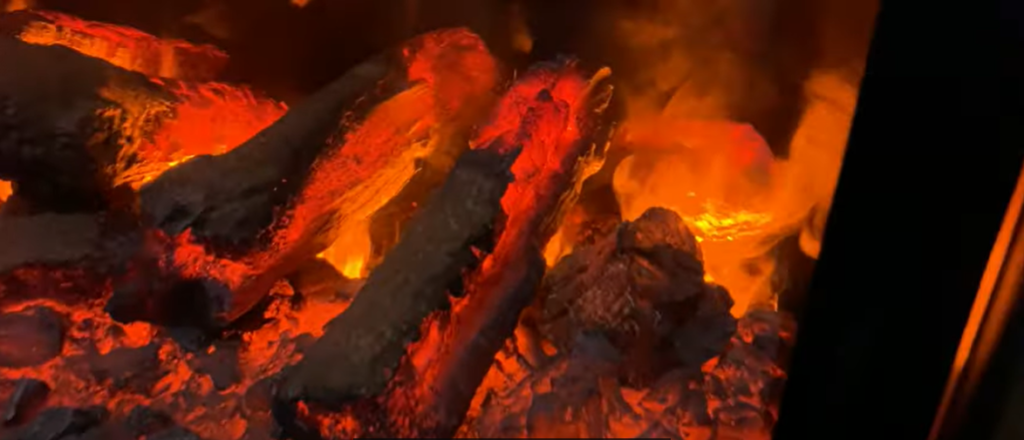
What Is An Electric Fireplace?
An electric fireplace is a household appliance that mimics the look and feels of a wood-burning or g. fireplace without the need for actual flames or fuel. They come in a variety of styles and can be placed in virtually any room in your home, making them a popular choice for homeowners.
There are two main types of el. fireplaces: inserts and built-ins. Inserts are stand-alone units that can be placed into an existing fireplace opening. Built-ins are permanent fixtures that are hardwired into the electrical system and must be installed by a professional.
El. fireplaces use one of two heating methods: radiant heat or convection heat. Radiant heat warms the air around the fireplace, while convection heat warms the air in the room.
A Brief Comparison
There are several things to consider. Here is an overview of some of the key differences:
- G. fireplaces tend to be more expensive.
- El. fireplaces are often considered more energy-efficient than g. fireplaces.
- G. fireplaces require less maintenance.
- El. fireplaces can be installed in any room, while g. fireplaces usually need to be vented through an exterior wall.
- G. flames in a fireplace are affected by wind. [1]
Pros and Cons
Here are some pros and cons to help you make your decision:
Gas Fireplaces
Pros:
- It is very efficient and heats up a space quickly.
- You can control the temperature easily with a gas fireplace.
- It creates a real flame that looks realistic.
- It is easy to maintain and doesn’t require much cleaning.
- There are many diverse styles of g. fireplaces available on the market.
Cons:
- It requires professional installation.
- It can be expensive to operate.
- It produces carbon monoxide and other pollutants.
Electric Fireplaces
Pros:
- It is very easy to install.
- It is very safe to use.
- It is very efficient and doesn’t produce any emissions.
- It can be used in any room of the house.
- There are various styles of electric fireplaces available on the market.
Cons:
- It can be expensive to operate.
- El. fireplaces don’t create a real flame.
- El. fireplaces require regular cleaning.
Cost to Install
The average cost to install a g.fireplace is $500 to $2000, to install an el. fireplace is $100 to $400.
There are two main types of el. fireplace inserts: those with a mantel and those without it. The type of insert you choose will affect the installation cost. Inserts that come with a mantel are more expensive to install because the mantel must be properly secured to the wall.
El. fireplace inserts that don’t come with a mantel are less expensive to install. However, you will need to purchase or build a mantel separately.

Installing A Gas Fireplace
Installing a g.fireplace is not as difficult as you might think. With the help of a professional, you can have a gas fireplace up. Choose the right location. Сonsider the size of your room and the amount of traffic that will be passing through it. Once you have chosen the perfect spot, you will need to measure the area and make sure that there are no obstructions in the way.
The last step is to test your fireplace. You will want to make sure that it is working properly before you use it. If everything looks good, then you are ready to enjoy your new gas fireplace!
Installing An Electric Fireplace
If you’re considering an electric fireplace, installation is probably one of your top concerns. You might be wondering if it’s something you can do yourself or if you need to hire a professional. The good news is that el. fireplaces are relatively easy to install. In most cases, you’ll only need a few tools and some basic knowledge of home wiring. However, we always recommend consulting with a professional electrician before starting any project that involves electricity.
One of the benefits of electric fireplaces is that they can be installed just about anywhere in your home. Unlike gas fireplaces, which require venting, el. fireplaces don’t produce any harmful fumes or emissions. This means you can put them in just about any room in your house, including bedrooms and bathrooms.
If you’re planning to install an el. fireplace yourself, the first step is to choose the right location. You’ll need to consider things like the size of the room and the existing décor. Once you’ve found the perfect spot, it’s time to start thinking about installation. Remember that electric fireplaces must be hardwired into your home’s electrical system. This means you’ll need to have access to an outlet or circuit breaker box. If you don’t feel comfortable doing this yourself, we recommend hiring a professional electrician. [2]
Once your electric fireplace is installed, all that’s left to do is sit back and enjoy the warmth! Electric fireplaces are a great way to add a touch of coziness to any room in your home.

Cost to Run a Gas versus an Electric Fireplace
The cost of running a gas fireplace is going to be different from the cost of running an electric one. In order to figure out which is cheaper, you need to know how much it costs p/hour to run each type of fireplace.
According to the National Fire Protection Association, it costs about $0.60 an hour to operate a 60,000 BTU gas fireplace. The average price of natural gas in the United States is $0.12 per therm. This means that a therm will last for about five hours in a 60,000 BTU gas fireplace.
Electricity is measured in kilowatts (kW), and the average price of electricity in the United States is $0.11 per kWh.El. fireplaces use about three to six kWh p/hour, so the cost of running an electric fireplace would be about $0.33 to $0.66 per hour.
In short, a gas fireplace is going to be cheaper to operate than an electric one. However, there are other factors that you need to consider before deciding which type of fireplace is right for you.
Gas fireplaces are generally more convenient than electric ones because they don’t require any electricity to operate. This means that you can use them even if the power goes out. El. fireplaces, on the other hand, require electricity to run and will not work if the power is out.
Finally, gas fireplaces require more maintenance than electric ones. You will need to have your gas fireplace serviced by a professional every few years to make sure it is running safely and efficiently. El. fireplaces require very little maintenance.
Which Is Safer, the Gas or the Electric Fireplace?
This is a common question that we get asked all the time. And the answer is…it depends! Both gas and electric fireplaces have their own set of safety concerns that you need to be aware of.
With a gas fireplace, you need to make sure that the gas line is properly installed and that there are no leaks. You also need to have your chimney cleaned regularly to prevent a build-up of soot and debris. And, of course, you need to be careful when lighting the fire!
An el. fireplace doesn’t require any installation or special precautions beyond making sure it’s plugged into an outlet. However, you do need to be careful not to overload the circuit it’s plugged into. And, as with any electrical appliance, you should never use it near water. [3]
So, which is the safer option? If you’re concerned about gas leaks or chimney fires, then an el. fireplace might be the better choice for you. However, if you’re worried about overloading circuits or getting shocked, then a gas fireplace might be the safer option.
Tips for Improving Your Fireplace’s Safety
There are some general tips you can follow to make sure it’s as safe as possible:
- Have your chimney inspected and cleaned regularly by a professional.
- Make sure there is nothing flammable stored near your fireplace.
- Never leave a fire unattended.
- Keep a fire extinguisher nearby, just in case.
With gas fireplaces, there are a few additional safety concerns to keep in mind:
- Check the connections and valves regularly to make sure they aren’t leaking.
- Have a carbon monoxide detector installed near the gas fireplace.
And with el. fireplaces, there are a few things to bear in mind as well:
- Don’t use extension cords with el. fireplaces. If you need to use one, make sure it’s rated for the power requirements of your fireplace.
- Only use the type of light bulbs specified by the manufacturer.
- Keep flammable materials away from the heating elements. [4]
If you follow these tips, you can help ensure that your fireplace is as safe as possible no matter which type you have in your home.

Install A Carbon Monoxide Detector
If you have a gas fireplace, place a detector near it. Carbon monoxide is an odorless and colorless gas that can be deadly if inhaled in large quantities. It will alert you if there are dangerous levels of carbon monoxide in your home so you can evacuate immediately and call the gas company.
El. fireplaces don’t produce carbon monoxide, but they do produce heat.
A Comparison of the Heat Output
G. fireplaces typically have a higher BTU rating, which means they are capable of producing more heat per hour than electric models. However, this does not necessarily mean that gas fireplaces are always the better choice. El. fireplaces can actually be more efficient at converting energy into heat, so they may end up costing you less to operate in the long run.
Gas vs. Electric: Which Is Easier to Install?
Another important consideration is how easy it is to install each type of fireplace. G. fireplaces generally require more installation work, as they need to be connected to a gas line. El. fireplaces can simply be plugged into a standard outlet. If you are not comfortable with doing your own installation, you may want to opt for an electric model.
The Average Lifespan
Most el. fireplaces have an average lifespan of around 20,000 hours. G. fireplaces can last anywhere from 15 to 20 years with proper maintenance.
So, if you’re looking for a durable fireplace, a g. fireplace is the way to go.
Environmental Ratings
When it comes to being eco-friendly, el. fireplaces are the clear winner. Gas burning releases carbon dioxide and other pollutants into the air, while electric units have no emissions whatsoever. If you’re interested in doing your part for the environment, an electric fireplace is definitely the way to go.
Of course, that’s not to say that gas fireplaces are bad for the environment across the board. While they may release some pollutants when in use, gas models are actually much more efficient than wood-burning fireplaces.
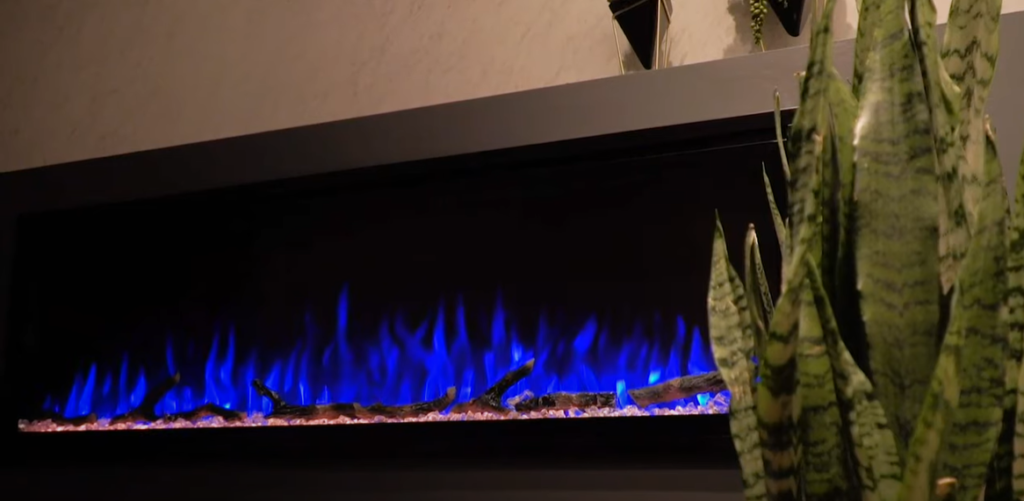
Which Is Better: The Gas or Electric Fireplace?
The most significant factors to consider when selecting a fireplace are fuel type. G. fireplaces use natural gas or propane as their fuel source, while el. fireplaces can be plugged into a standard 120-volt outlet. Another difference between the two is that g. fireplaces require ventilation, while electric ones do not.
In terms of maintenance, g. fireplaces require more frequent cleaning and servicing than electric ones. They also need to have their venting systems checked regularly to make sure they’re functioning properly. El. fireplaces are very low-maintenance and only require occasional dusting.
Comparison of Gas and Electric Fireplaces
Choosing between a gas and an electric fireplace depends on your specific needs and preferences. Below is a comparison of various factors to consider when deciding which type of fireplace is better for your home.
| Factor | Gas Fireplace | Electric Fireplace |
|---|---|---|
| Installation | Requires professional installation and a gas line. Venting options are necessary. | Easy DIY installation, no venting needed. Plugs into a standard electrical outlet. |
| Heat Output | High heat output, can be a primary heat source for a room or home. Offers instant warmth. | Moderate heat output, suitable for supplemental heating. Takes time to warm up the room. |
| Ambiance | Realistic flames and the ambiance of a traditional fireplace. Logs or glass media provide an authentic look. | Realistic flames, often with customizable colors and brightness. Some models include ember bed options. |
| Energy Efficiency | High energy efficiency, with controlled heat and adjustable flame settings. | Efficient, as all energy is converted to heat. Flame effects can run without heat for ambiance only. |
| Maintenance | Requires annual professional maintenance for safety. Regularly replace logs or embers. | Minimal maintenance, occasional cleaning and changing light bulbs if applicable. |
| Cost | Higher upfront costs due to installation and gas line requirements. Ongoing gas costs apply. | Lower upfront costs with simple installation. Electricity costs for heating may vary. |
| Environmental Impact | Produces emissions and relies on natural gas or propane. Impact varies based on gas source. | Generally considered more environmentally friendly, with no emissions or fuel consumption. |
Explanation of the table:
- The table provides a comparison of various factors to consider when choosing between a gas and an electric fireplace, including installation, heat output, ambiance, energy efficiency, maintenance, cost, and environmental impact.
- Each factor is described, highlighting the differences between the two types of fireplaces to assist homeowners in making an informed decision.
FAQ
Is a gas fire better than an electric fire?
This is a difficult question to answer as it depends on a number of factors. If you are looking for a more traditional feel, then a gas fire may be better for you. If you are looking for something more modern and sleek, then an electric fire may be the way to go.
Gas fires tend to produce more heat than electric fires, so if you are looking for something that will heat your home effectively, then a gas fire may be the better option. Electric fires are often cheaper to install than gas fires, so if cost is a factor in your decision, then an electric one may be the way to go.
Consider your needs and preferences carefully before making your decision.
Is a gas fireplace the same as an electric fireplace?
No, a g. fireplace is not the same as an el. fireplace. A g. fireplace uses natural gas or propane to create heat, while an electric fireplace uses electricity to generate heat.
Do electric fireplaces give off any heat?
Yes, el. fireplaces give off heat. The amount of heat an el. fireplace produces is determined by the size and power of the unit. The majority of el. fireplaces are capable of heating a small area or room.
El. fireplaces are a fantastic alternative for individuals looking for the feel of a traditional fireplace without dealing with wood or gas. El. fireplaces are also much safer than traditional fireplaces since there is no open flame.
If you’re looking for an el. fireplace that will provide supplemental heating for your home, make sure to choose a unit that is powerful enough to heat the space you want it to.
El. fireplace inserts are a great way to retrofit an old, inefficient fireplace. Inserts fit into the existing fireplace opening and can greatly improve the heating efficiency of your fireplace. [5]
If you’re looking for an electric fireplace that looks like a real wood or gas fireplace, choose an insert with realistic flames. These units use LED lights to create the illusion of flickering flames. Many also come with remote controls, so you can easily adjust the settings from anywhere in the room.
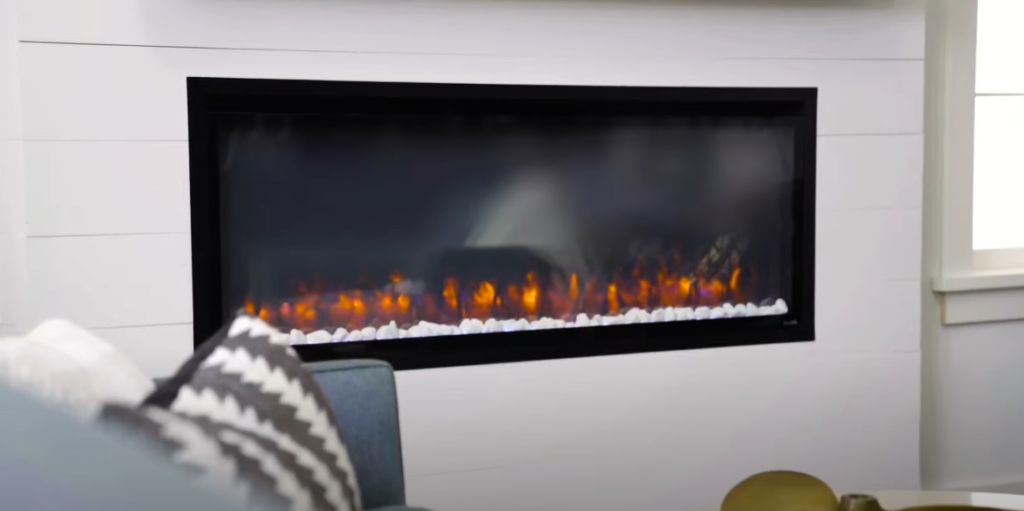
Why are electric fireplaces better?
There are a few reasons el. fireplaces have an edge over gas fireplaces. First, they’re much easier to install. You don’t need to worry about running gas lines or hiring a professional – el. fireplaces can be plugged into any standard outlet. Second, el. fireplaces are much safer. Finally, electric fireplaces use less electricity and generate less heat.
If you’re looking for a fireplace that’s easy to install, safe, and efficient, an electric fireplace is the way to go.
Do Electric Fireplaces Look Real?
The number one concern most people have about el. fireplaces is that they don’t look real. This couldn’t be further from the truth! El. fireplaces are designed to mimic the look of a traditional fireplace, complete with realistic flames. [6]
So, if you’re looking for a fireplace that looks as close to the real thing as possible, an el. fireplace is a great option.
What are the advantages of a gas fireplace over an electric one?
Gas fireplaces offer several advantages over electric fireplaces. They provide real flames and heat, often more efficiently and effectively. Gas fireplaces can also operate during power outages, which is not the case with electric fireplaces. Additionally, they are known for their ambiance and can be controlled with a remote or wall switch for convenience.
Are electric fireplaces more cost-effective than gas fireplaces?
Electric fireplaces are generally more cost-effective to operate than gas fireplaces. They are highly efficient and don’t require venting, making them a more energy-efficient option. While gas fireplaces may have lower fuel costs, electric fireplaces often have lower overall operational costs due to their energy efficiency.
Which type of fireplace is easier to install, gas, or electric?
Electric fireplaces are typically easier to install than gas fireplaces. Electric fireplaces do not require venting or gas lines, making their installation less complex and more affordable. They can be easily plugged into a standard electrical outlet, while gas fireplaces often need professional installation, including gas line connections and venting systems.
Do gas fireplaces provide more heat than electric fireplaces?
Gas fireplaces generally provide more heat than electric fireplaces. Gas flames produce real, radiant heat that can warm a room effectively. Electric fireplaces primarily use a heating element and a fan to distribute warmth, which may not be as efficient as the direct radiant heat produced by gas flames.
What are the maintenance requirements for gas and electric fireplaces?
Gas fireplaces require more maintenance than electric fireplaces. Gas fireplaces need annual inspections, cleaning, and servicing to ensure safety and efficiency. Electric fireplaces, on the other hand, have minimal maintenance needs, mainly involving occasional dusting and checking electrical connections. This makes them a lower-maintenance option.
Useful Video: Gas vs Electric fireplace (pros and cons)
Conclusion
It’s ultimately up to the homeowner to decide which is best for their home. If you’re looking for a more traditional feel, then a gas fireplace may be the way to go. If you want a hassle-free option that doesn’t require any maintenance, then an electric fireplace might be better suited for you. Happy fireplace shopping!
References:
- https://www.familyhandyman.com/article/gas-vs-electric-fireplace-best-for-homes/
- https://burninglog.ca/electric-fireplaces-vs-gas-fireplaces/
- https://fireplacetips.com/gas-vs-electric-fireplaces/
- https://blog.nationwide.com/fireplace-safety-tips/
- https://www.familyhandyman.com/article/gas-vs-electric-fireplace-best-for-homes/
- https://magikflame.com/learning-center/electric-fireplace-guides/do-any-electric-fireplaces-look-real/





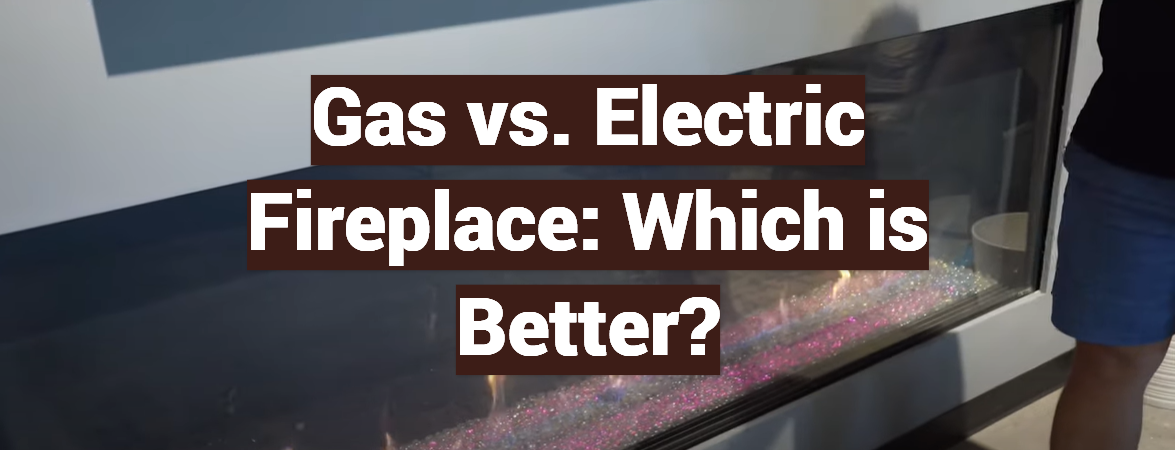
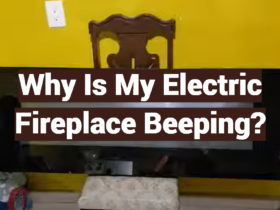


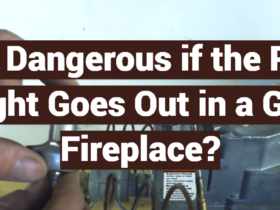

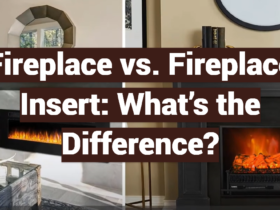


Leave a Review